La Paz, the capital of Bolivia, is the highest capital city in the world. It rests at an altitude of 12,000 feet (3,640 meters) above sea level. Yet, it is still in a valley surrounded by ruggedly topped mountains.
We did not want to leave our little country home in the Sacred Valley in Peru, but we also wanted to make it to Bolivia before the next strike closed the border, and risk overstaying our visa.
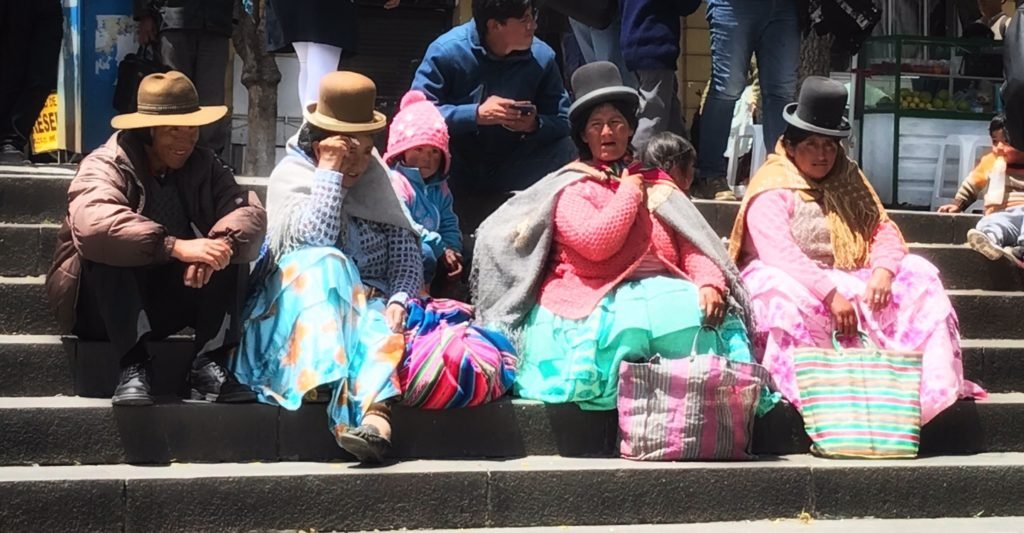
BOLIVIAN BORDER
We received word that the people of Bolivia were staging a strike on Feb 21st. It was expected to impact transportation and possibly close the country’s borders. Since our visa in Peru ended on the 22nd, we decided to enter before the strike started.
| TIP 1: US Citizens who travel, sign up for SMART travel. You will receive travel alerts from the US embassy regarding matters like bomb threats and strikes. | TIP 2: If you plan to visit Bolivia get your visa in Cusco – don’t wait until you are at the border crossing and be one of the horror stories. See our Visa tips here! |
We normally travel with time to spare as it makes it a lot more stress-free. Everything we need is in our packs, so if we get stuck somewhere, we can simply wait it out. There is no rush. In fact, our only deadlines these past couple years have been this weekly blog (self-imposed, but really loving it) and Visa limits.
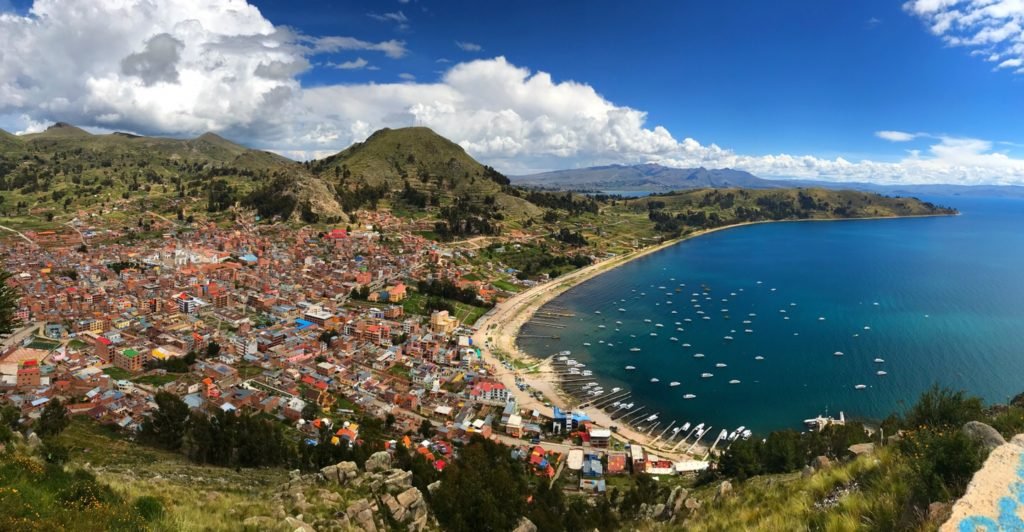
COPACABANA
We made it just over the border and stayed a few days in Copacabana, a little tourist town along the lakeshore of Lake Titicaca. Lake Titicaca is a high elevation lake with a surface elevation of 12,500 feet (3,812 meters). It sits in between Peru and Bolivia. We waited out the strike just inside the border of Boliva before moving on to lessen the risk of getting stuck on the road. We enjoyed walking around town and up the Cerro Calvario for an excellent view of the town and gaze back over the lake toward Peru.
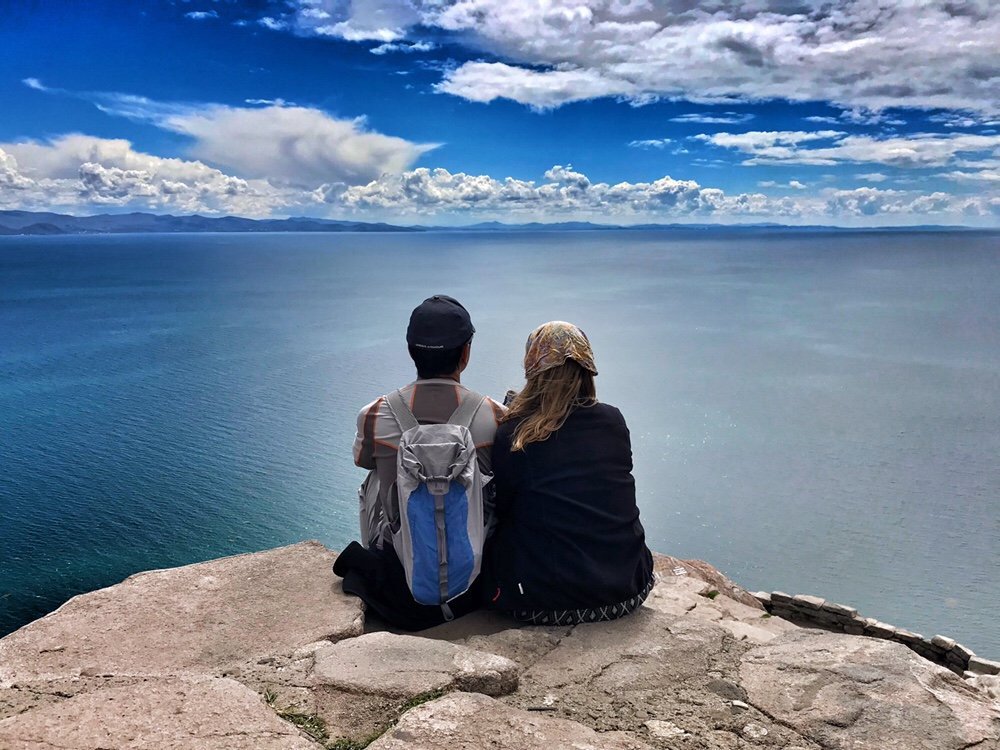
ISLA DEL SOL
The major tourist site in this area is Isla del Sol. There are said to be several ancient ruins on the north side of the island. Due to strife between the north and south side of the island, the Northside is not safe. Even though accommodations sites still show available and let you book a room online.
There is a conflict between the people groups on the island over buildings erected on sacred ground. The South built a tourist lodge in the center of the island. Allegedly, the North blew it up with dynamite in retaliation. Just the prior month, the body of a Korean woman was found, raped and mutilated on the north side of the island. We skipped the island.
DEMONSTRATIONS AND STRIKES
The planned strike evidently did cause traffic difficulty in La Paz as the demonstrations blocked some of the roads we would need to pass to get to our destination in La Paz, so we were happy that we waited for it to end. The transportation sector complained about the strike because it disrupted their business. Two weeks earlier, the transportation sector itself had a strike and it disrupted everyone else’s business. Hmm…

JOURNEY TO LA PAZ
After a few days in Copacabana, we made our way to La Paz. Our colectivo (a public transportation van) wandered through mountain roads and high elevation, grass-covered meadows. Along one of the steep narrow passageway we saw a number of people alongside the road staring down the cliff. They were looking down at a truck that didn’t quite navigate that corner slow enough. It had careened over the side of the road.

Soon the road ended at another lakeshore of Titicaca (the shoreline is 699 miles/1,125 km), and we would need to cross the water. We piled out of the colectivo and into what looked like a small handmade boat with old boards below our feet, well worn with water and time.
Our colectivo drove out onto its own ferry, a flat platform with small sides that could carry two vehicles. I looked down between the boards under my feet and watched the water in the boat’s bottom slosh around and slowly rise as we made our way across the channel. It was not a huge channel, so I knew I could swim it in the worse case scenario, but I wondered how many of the locals on the boat knew how to swim. There were no life jackets. And it would have been a freezing swim.

We all made it across safely, as I’m sure they do many times every day. We loaded back into the colectivo and continued on our journey. After a couple of hours, we crested a mountain and saw our first glimpse of La Paz, a large city sprawled out in the valley below.
LODGING
Airbnb is not yet widespread in Bolivia, and the available ones are expensive or already booked. So once we disembarked from the colectivo, we started walking around to hostels, inquiring about the prices. We found one for 80bs ($12 USD), Ponderosa Posada along Av. Illampu, and moved in. It included a shared bath, hot water – electric shower head of course – and a free breakfast. Toilet paper was not included, as seems the case in much of Bolivia. We always carry a roll with us. It is another strange thing that has become normal. Twelve dollars was our average night stay in Costa Rica – the most expensive country so far. We’ve been told Bolivia is the cheapest country, I guess time will tell.
THE DEAD BODIES
I’m actually sitting here struggling to describe La Paz and the experience in Bolivia so far. Do I tell you about the local women with colorful aguayo blankets on their backs carrying babies or massive amounts of goods that they plan to sell somewhere on the street corner?

Or do I describe the wires, the crazy wires strung in knots above the streets? Well, most of them are above the streets. Some hang down on the sidewalk or even onto the road touching the ground. Overhead lights in the room flicker at night when they are off from leaked electricity and sparks always fly or a sizzling and can be heard when something is plugged into the wall.

We dodged the wires as we made our way through the witch’s market close to our hostel. In a bowl next to me was a dried llama fetus. Hanging above us were larger dried llamas, though still babies. The locals believe these bring good luck to a project. The larger the project, the larger the body required.
One city tour even described the practice of finding a homeless person, down on his life, to use as good luck for massive projects. The homeless person is brought home, given a large dinner and lots of alcohol. When the person passes out, they bury his body under the new home or hotel project. Sounds eerily similar to the practices of the ancient Inca that we encountered in Peru.

LA PAZ, CITY IN THE SKY
As we continued our stroll downtown and onto an urban park, we came upon an elevated walkway that rose high above the ground, giving us a superb view of the streets and mountains towering behind the skyscrapers. The walkway leads up to the Mirador Laikakota which boasts an even better view.
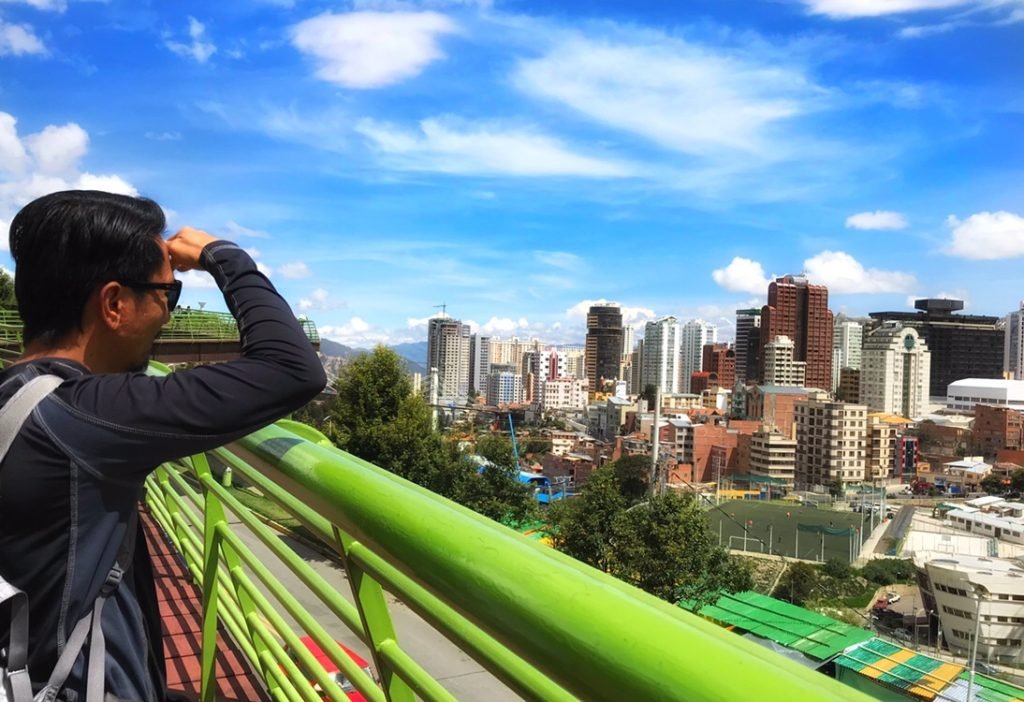
Before entering the mirador, we asked a couple who was coming out how much the entrance fee was. We have adopted the practice of asking a random local, not the business owners, how much a business charges. We don’t ask the merchants for their prices, as they often give us the jacked up price for foreigners. We simply hand them the fee and act like we know what we are doing. They don’t argue. This local couple told us the price and then gave us their tickets. They said it was good all day.
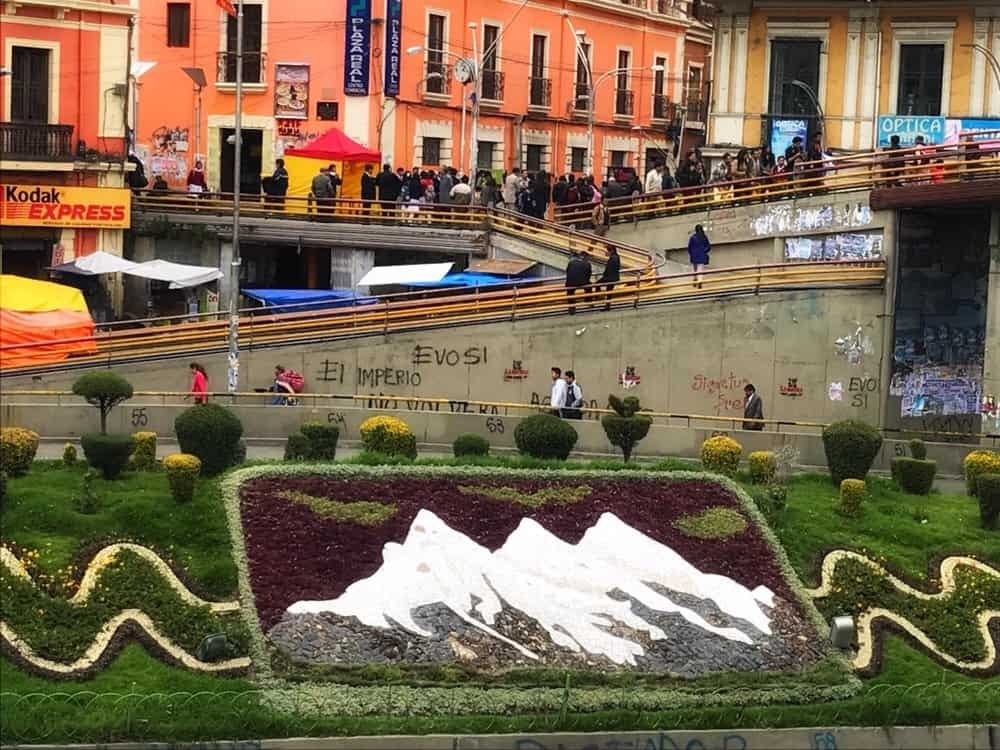
We strolled through town while the sun was shining strong, with a light breeze countering its heat. I gazed at the jagged mountains and cliff sides surrounded by homes. The snow-capped peak of Illimani towered over us to the south. I turned to Trin and said, “I really like La Paz. I can’t even tell you why, but I really like it.”
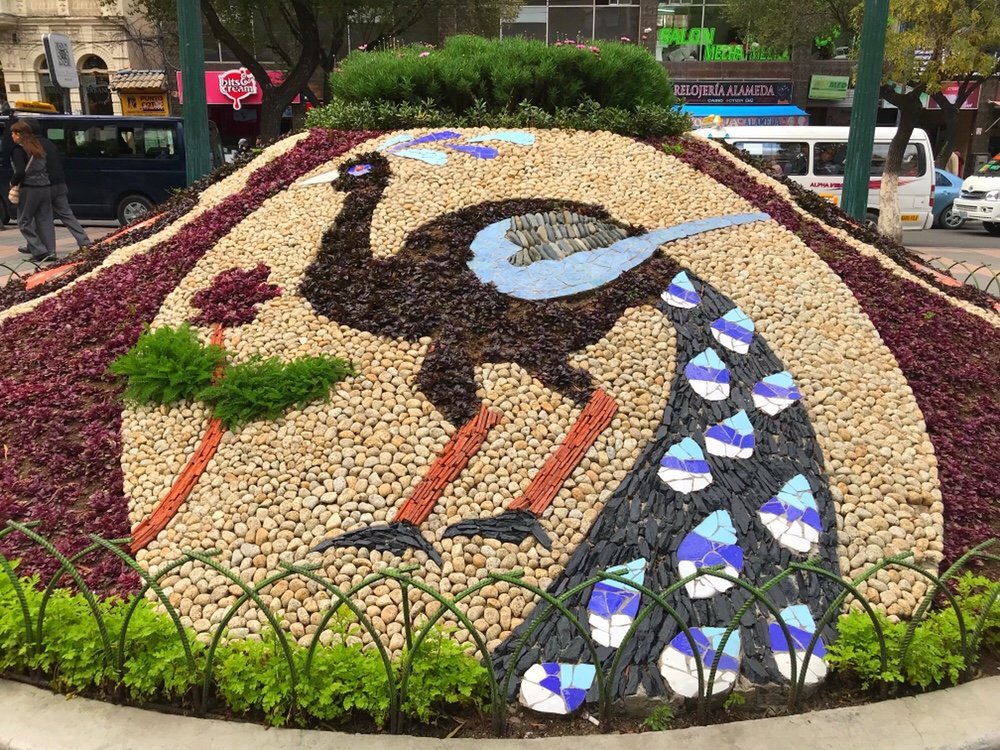
Maybe it was the cable cars that reminded us of Medellin, Colombia, our favorite city so far. Construction currently expanding the cable system to be citywide looked like hope. Maybe it was the artful landscaping that adorned some of the city walkways. It spoke of beauty that the city was attempting to gift to its people. I really don’t know, but I loved it.

VALLE DE LA LUNA
On the south end of the city of La Paz is a place called Valle de Luna, or Moon Valley. Some have said that Neil Armstrong visited this valley once and said it reminded him of the moon. Well, he would know, but this anecdote is unconfirmed. It was a surreal, its monotone colored pillars jutting up into the sky reminding us of places in Utah and the midwestern badlands in the USA.

Walking on the top trails and feeling the chilly breeze had us donning our jackets and tightening my scarf. Then we descended into the narrow crevices where the breeze stopped and the sun baked us, and we had to peel off layers. It is a place certainly worth a visit, even though the slight stench of a local pig farm wafts through it.
A DEMONSTRATIVE NATION
On the ride back to our hostel, we noticed that the driver of our colectivo was drunk and was having difficulty holding his head straight. We’ve heard that this is common, but so far he was our only terrible driver in Bolivia. If we had been on a mountain road, I would have told him to stop so we could catch a different colectivo. However, traffic was heavy and he could barely go over 10 miles an hour at a time.
Some time back, the Bolivian government passed a law that revokes a driver’s license upon first DUI offense. The transportation sector held a two-day strike to protest against this law. It was known as the Drunkard’s Strike.
One demonstrator was quoted as saying, “It used to be that a 200 bolivianos ($30) bribe would get you out of a DUI write-up. Now it’s going to jump to 1,000 ($140).” Life simply is not fair.

Another day trip from La Paz is the famous Yungas Road or death road. But we already told you about our bike ride down that narrow steep stretch last week. 🙂
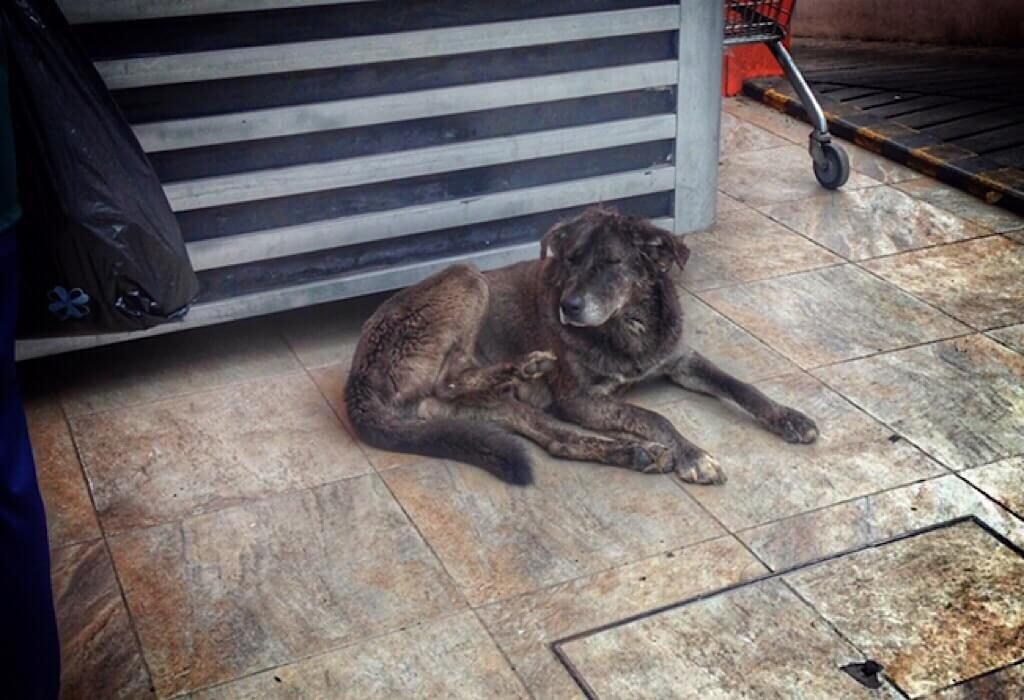
A HORRIBLE SIGHT
I often look at stray dogs as an indicator of the culture as well. Are they starving or well cared for? How people treat the innocent, to me, says a lot. Most of the dogs we’ve encountered in La Paz seem very well fed, but still a timid. I wonder if they “take care” of stray dogs. I have seen more dogs on leashes here than anywhere else in South America.
But then we saw a stray. He looked well fed and looked like he fell asleep just before scratching his ear as his hind paw was in mid-air. His eyes were closed. We thought he was cute, so we moved closer to take a picture. That was when we saw the gaping hole in the back of his head. We could not eat the rest of the day. Some horrors are hidden like dark secrets and I wonder how long we would need to be here in Bolivia to truly understand it.
Every day is a learning experience. New countries and cultures stretch our imagination even if I don’t yet understand it all. It is a beautiful opportunity and we don’t regret walking through this door to the world.
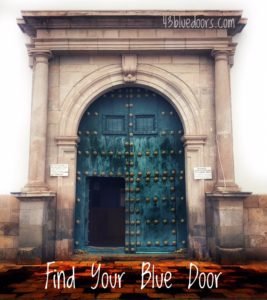


This has got to be the scariest blog yet. You make me worry about you now in this country. STAY SAFE! Love you
We have met many nice people, like the ones who gave us their tickets. We are careful as we can be and traveling by two is safer. We also hook up with other travelers for some activity’s.
Wow! What a report! Stay safe!
Thanks, we will do our best!
Great adventure you had there!
Thanks! Sorry for the long delay in our reply. We were out of WiFi range for the week.
Your friend Priscilla Allred told me about your blog. We are members of the same church. I was an exchange student living in La Paz back in the mid 70’s. I maintain contact with some of my”‘adopted” family & friends who live there. I am thoroughly enjoying your blog. I left a part of my heart in La Paz. Perhaps I will return someday. A beautiful country with such a varied landscape. Thanks for sharing.
Thank you so much for reading and taking the time to comment. Pricilla and I just talked today after many years. I love technology and the way it helps us find old friends and keep in contact.
Bolivia certainly does have a varied landscape, we are enjoying our time here very much. I’m very happy to hear you are also enjoying the blog. Thank you again!
South America is one of those places where I feel a bit leery to visit.
(Then again, I thought this about South Africa and North Korea and I went to both and had a great time!!)
Stay safe – the photos are amazing. 🙂
South America can be dangerous but I would think North Korea would be even more so! We were surprised how much we enjoyed some of the places that we had heard would be so dangerous. There are good people everywhere
Oops. Didn’t realise this post was a year old! Guess you made it out of there alive. 🙂
Yes, but we did just get back to the USA earlier this year. Glad you made it from your travels alive as well :).